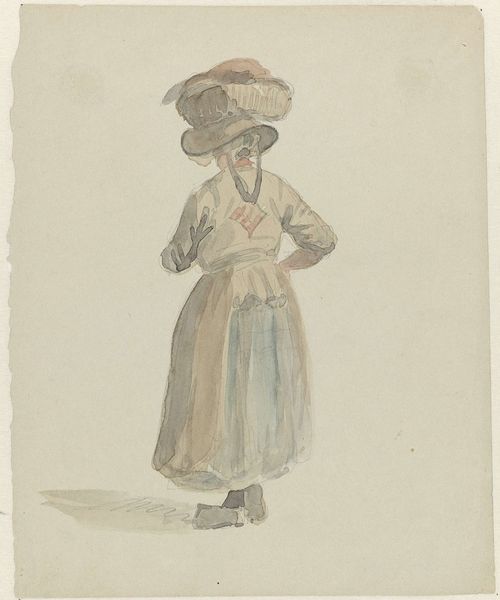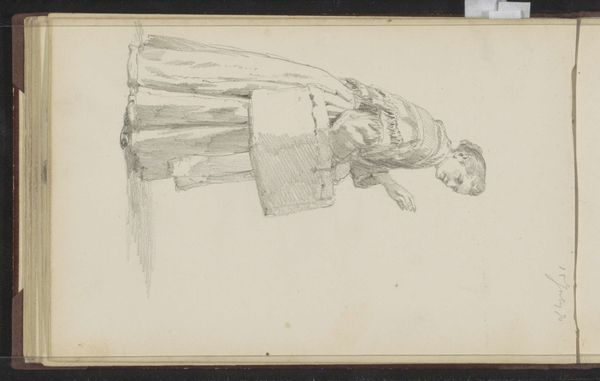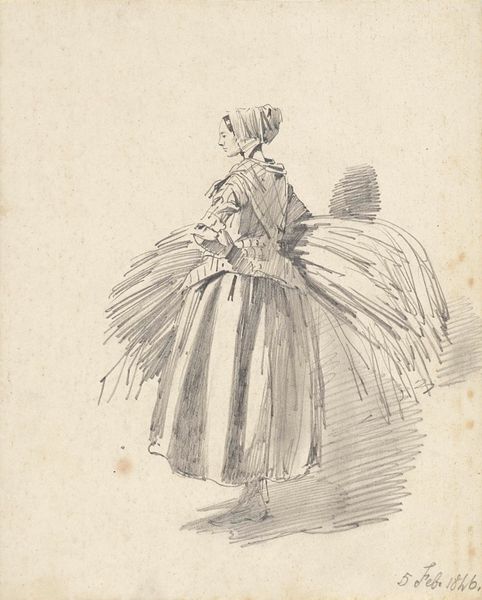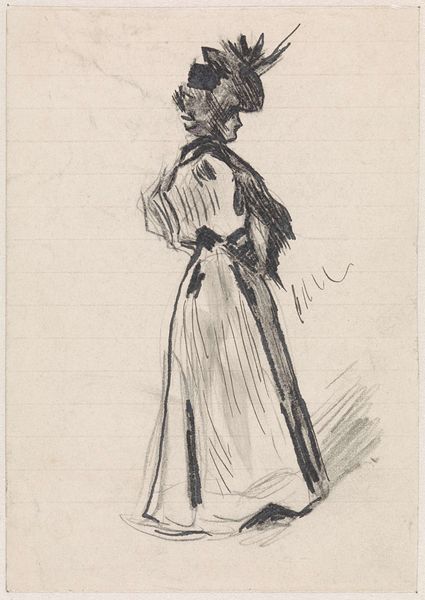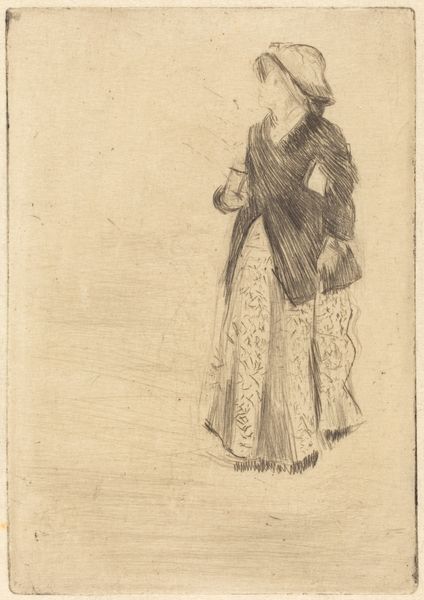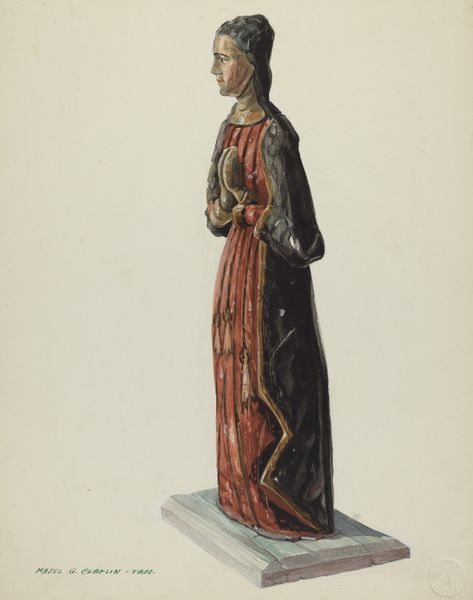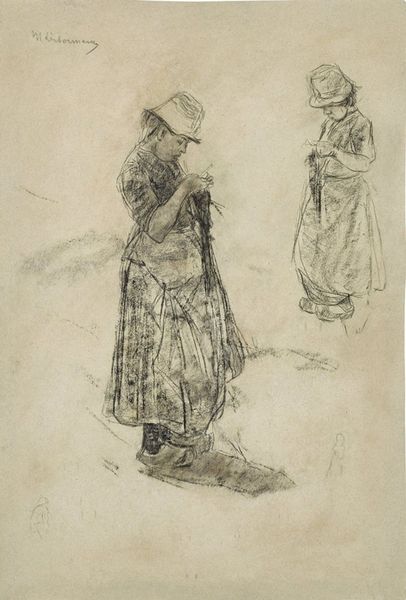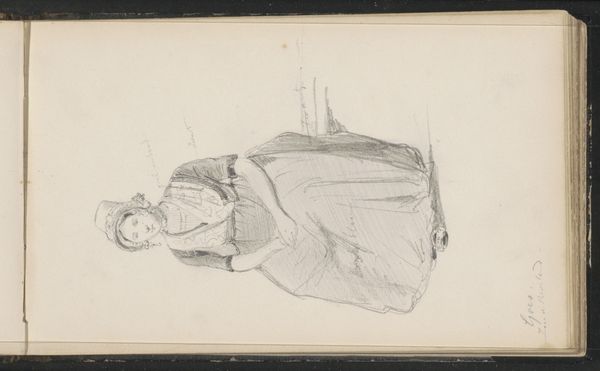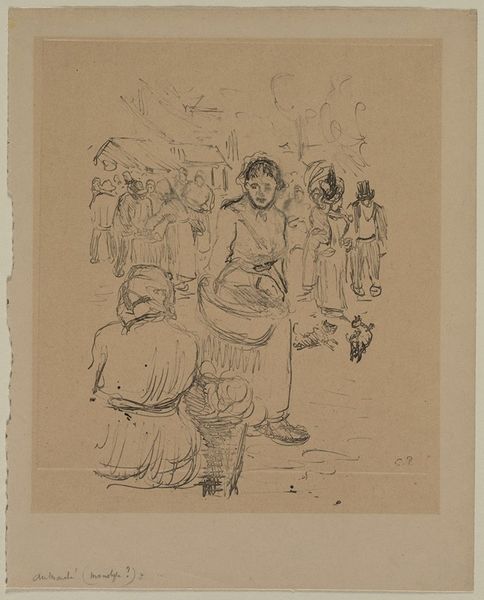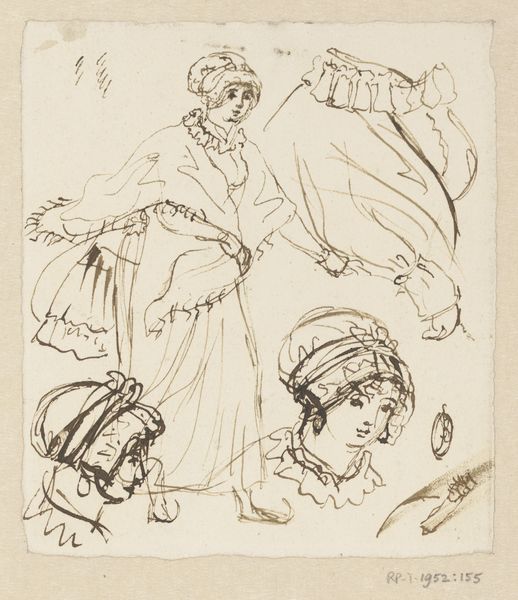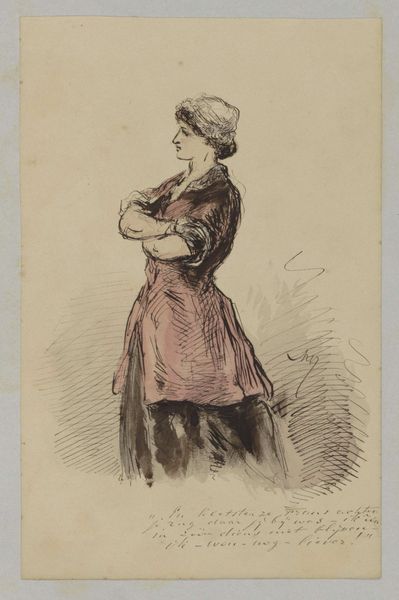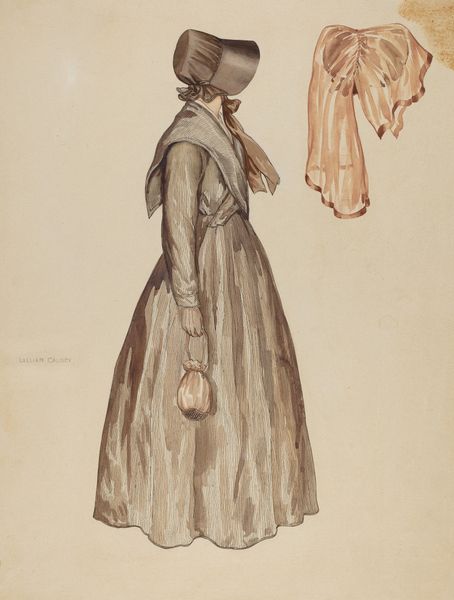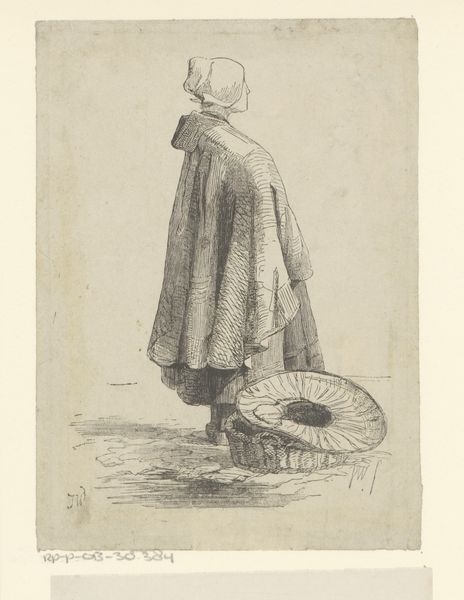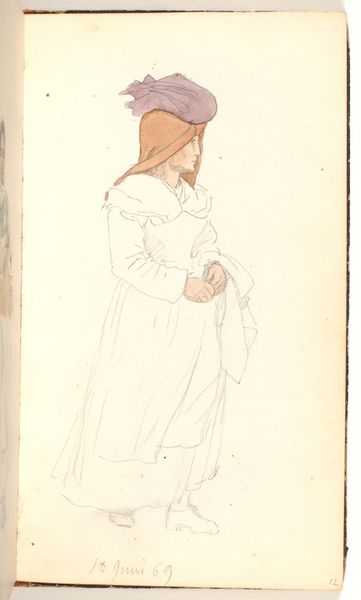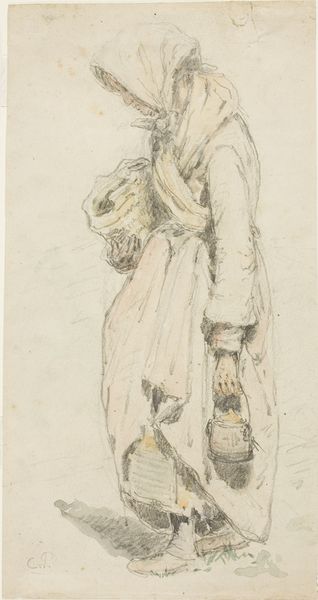
drawing, watercolor, pencil
#
portrait
#
drawing
#
figuration
#
watercolor
#
coloured pencil
#
romanticism
#
pencil
#
watercolour illustration
#
genre-painting
Dimensions: 23.8 x 17 cm
Copyright: Public domain
Editor: So this is Rudolf von Alt's "Dalmatian woman; in the background there are sketches of four men" from 1841, done in pencil and watercolour. It’s a somewhat melancholic study, with a woman looking away and other shadowy figures lurking in the background. What do you see in this piece beyond its initial appearance? Curator: Well, let's start with the "Dalmatian woman" herself. Think about the historical context. Who were Dalmatian women in 1841? Their roles were often relegated to domesticity, their identities subsumed. The artist places her with her back to us, immediately removing her agency, as though denying her a voice or a face. Notice the male figures sketched behind her. How might those figures speak to the woman’s subjugated identity within a patriarchal society? Editor: I guess those men could be figures of authority, perhaps representing societal expectations imposed on her. Is it common for women to be drawn with their backs towards the artist during the Romantic period? Curator: It wasn't uncommon, particularly in Romanticism, which frequently aestheticized a kind of pensive solitude, often projected onto female figures. Consider, too, the technique of watercolour – its inherent ephemerality could be read as reflecting the precarious position of women at the time, their existence rendered delicate or easily erased. Do you see other elements that echo this precarity? Editor: The incompleteness of the male figures might mean they aren’t fully realized, reflecting unstable masculinity or maybe even commentary on social instability as a whole. What about the bright red of the shawl she is wearing? Curator: An excellent observation. Red is often a symbol of passion, resistance, or defiance. In this context, one could argue that the shawl represents a quiet rebellion against her voicelessness. Is it possible that it gives some life to the woman, against the grey men lurking in the background? Editor: Thinking about this now, I initially missed how layered the imagery is and how the background might be actively commenting on the main subject. I appreciate you helping me interpret the woman’s position and to better acknowledge these visual relationships. Curator: Absolutely. Hopefully, through this lens, we can re-evaluate art not just as aesthetic objects but as active participants in dialogues about power, identity, and social change.
Comments
No comments
Be the first to comment and join the conversation on the ultimate creative platform.
